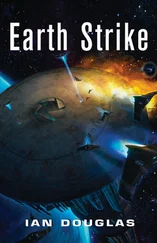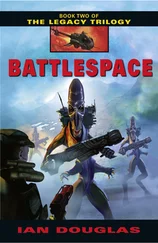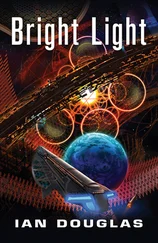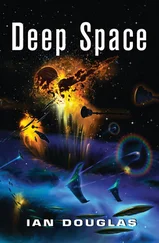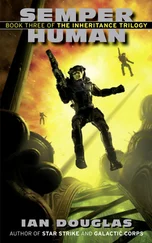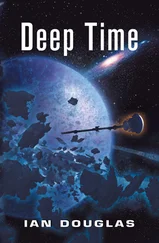So they are here. Interesting . Most—not all, but most —of the beings in that circle towered over Gray: the Groth Hoj by a meter or so, the Drerd by literally hundreds of meters. Individual F’heen were a few centimeters across, but that flashing, shifting sphere of hundreds of closely packed individuals was easily ten meters across. The Agletsch was smaller than a human, perhaps half of Gray’s height, and there was something to his right that looked at first glance like a glistening and flaccid pile of internal organs a couple of meters long and half a meter deep. Those few smaller beings, however, didn’t lessen at all the impact of standing with so many giants. Gray felt dwarfed, less than insignificant. It didn’t help that every single entity there belonged to a civilization more mature, more technologically advanced, than Earth’s. He felt like a child in a roomful of very tall, very old adults.
And how could it have been otherwise? Humankind had emerged from pre-technological darkness only the blink of an eye ago. It had been ten millennia since the invention of the plow, a mere six hundred and some years since the discovery of radio, and half that long since the first human faster-than-light voyage. The chance that any star-faring aliens encountered would be younger than humans was nil.
He thought of the assembly as the Sh’daar Council, though how accurate a description of the group that might be he had no idea.
“I have information for this Council,” Gray said, speaking through his cerebral implants. “Information acquired from the remote future—from a time twelve million years beyond my own epoch, and about eight hundred eighty-eight million years from this time we’re in now. We learned this from the Glothr, on the sunless world we call Invictus.
“And I think all of you, the Sh’daar Collective Council, need to know this …”
2 November 2425
Virtual Reality
N’gai Cluster
1212 hours, TFT
Konstantin-2 fed recorded imagery to the Sh’daar Council as Gray continued to speak. The powerful AIs on board America had, 12 million years in Humankind’s future, tapped into the vast and intricate web of Glothr information networks. The information and imagery found there had been returned to Konstantin in the year 2425, analyzed, and translated. Those records, now imbedded within Konstantin-2’s memory, created a visual backdrop shared by all of the entities present as Gray spoke.
“This,” Gray said, “is the galaxy, my galaxy—we call it the Milky Way. This is what it looks like in my own time.”
The plain and its looming circle of giant beings had vanished. In its place, the Milky Way hung in silent, glowing splendor against Night Absolute. The central hub showed a faint reddish tinge while the spiral arms around it glowed faintly blue. From this vantage point, it was easy to see that the galaxy was, in fact, a barred spiral, its hub elongated in its ponderous revolution about the super-massive black hole at its heart.
Four hundred billion stars … forty billion Earthlike worlds … some millions of intelligent species, many with star-faring civilizations—all within that single soft glow of tangled, nebulae-knotted, spiraling starlight.
“A wise human named Sun Tzu once said, ‘Know your enemy,’” Gray told the others, “and so we humans have been learning as much as we can about the Sh’daar Collective. We know you evolved within this dwarf galaxy you call the N’gai Cluster, that your civilization was destroyed by the Schjaa Hok , the Transcendence, and that you rebuilt it from the ashes.
“We know that as the N’gai Cluster was devoured by the larger Milky Way, you spread out to create a new empire, one spanning both space and time … and that you were determined that the Transcendence would never again threaten your culture, or the cultures of other species that were interacting with you. We know that you found ways to travel from your epoch to mine, where you gathered many more species to your cause … the Turusch, the H’rulka, the Slan, and others. And when we humans refused what you offered—and what you demanded in return—you urged those species to attack us, either to force us into obedience, or to destroy us …”
Thunder rumbled, deep and insistent—the Drerd interrupting. You humans are balanced on the precipice , the translation informed him. You are closer to Schjaa Hok than you realize. If you fall, you threaten us all.
“We have never understood your fears about this,” Gray said. “If a single species in this entire, vast galaxy goes extinct—or if it enters its own transcendence and vanishes entirely—how does that threaten you?”
The spinning gateways give access not only to far expanses of space , another being—the one like a golden slug, the Sjhlurrr—reminded him, but to the deeps of time as well. Causality can be broken. Whole universes of creativity and creation, of experience, of suffering and of ecstasy, of Mind can be made void in an instant. What thinking being could not fear such an eventuality ?
Spinning gateways . That must be what the Sh’daar called the TRGA cylinders. He felt the Agletsch within his implant, confirming his guess.
“There may be,” Gray said, “greater fears. We recently traveled twelve million years into our own future, and encountered the Glothr. We learned a great deal from them.
“And we learned about the end of galactic civilization … or at least of that aspect of civilization that includes the Sh’daar and Humankind.”
And the virtual image of the Milky Way … changed.
That vast whirlpool of hundreds of billions of suns, young and bright and vital, its spiral arms picked out by the long, knotted battlements and parapets of black dust and by the piercing gleam of young, hot stars, faded away to shreds and tatters, to be replaced by … something else, a pale shell of its former beauty. The mathematical perfection of those spiral arms had been torn apart, the nebulae devoured, the myriad stars vanished or somehow dimmed—a handful of stars surviving of the myriads visible before. The galaxy had become a wan, dim shadow of its former light and strength.
And at the galactic core something strange was visible, nestled in among the remnant suns. Something shadowy, with just a hint of golden light. It was difficult to see, difficult to interpret, to understand , but it looked like an immense translucent sphere fully ten thousand light years across, forged, perhaps, out of the clotted clouds of suns that had been there before.
A scant handful of species, according to the Glothr records, and including the Glothr themselves, were in full flight from the ravaged galaxy behind them, fleeing to other galaxies across the empty gulfs of space. A number of dark and frigid worlds—a fleet, a pack of Steppenwolf worlds—were fleeing out into darkness.
“We think,” Gray told the Council, “that what we’re seeing in there engulfing the galaxy’s central core is a full-blown Kardeshev III civilization … a galactic Dyson sphere.”
As he said this, Konstantin-2 shared with the Council the background information to what must have been untranslatable terms to the alien species:
In the mid-twentieth century, the Soviet scientist Nikolai Kardashev had lent his name to his proposed method of measuring an advanced civilization’s level of technological development. A K-I civilization used all of the available energy of its home planet. A K-II used all of the energy from its star, and physicist Freeman Dyson had suggested how that might be possible: a hollow sphere, or, alternatively, a cloud of orbiting satellites, that collected all of the energy emitted by the civilization’s star.
Читать дальше


